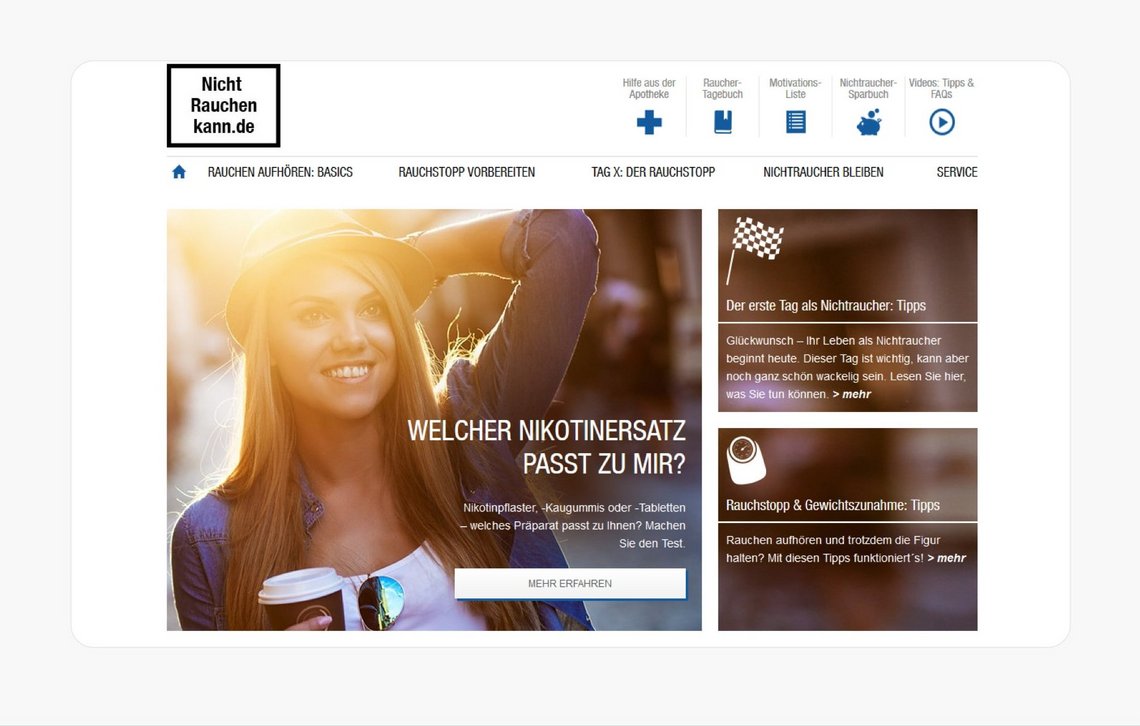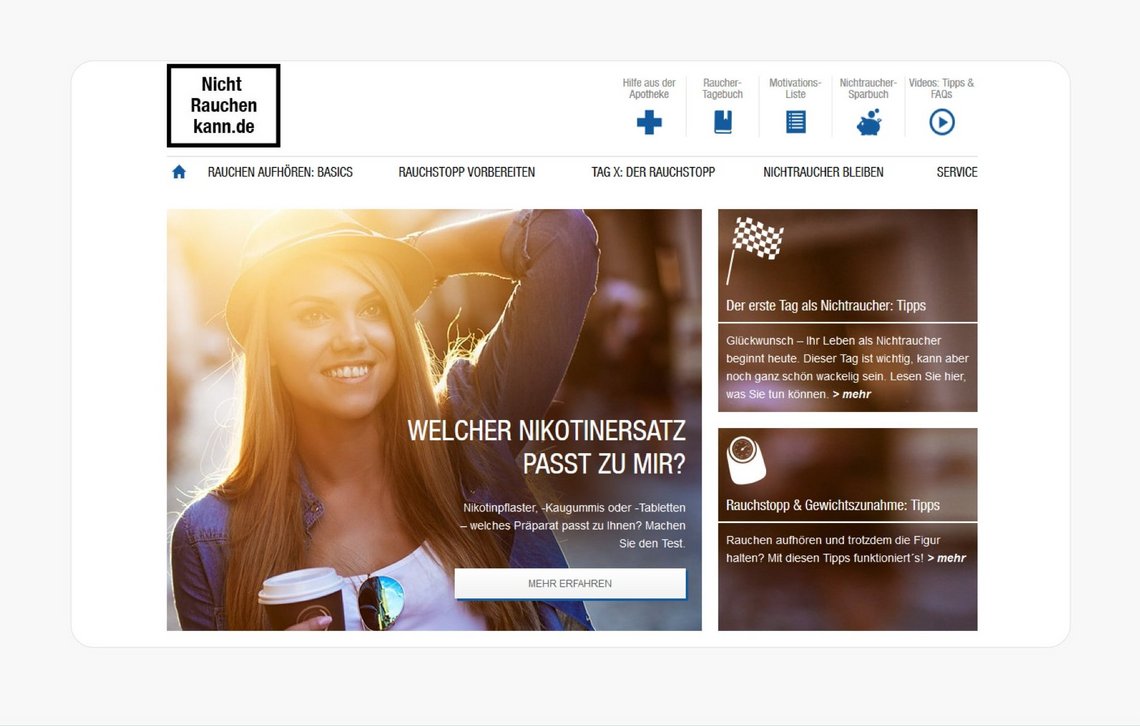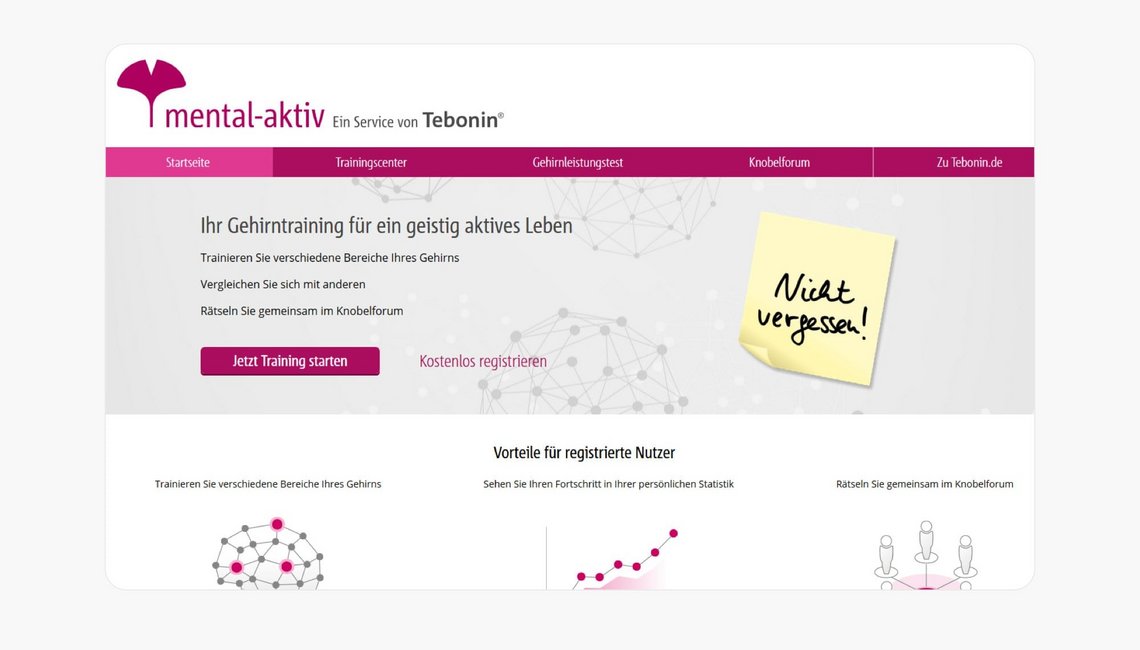How OTC brands are strengthened in the long term
Reading time:
12 min
Tags:
SEO, digital visibility, brand management, OTC marketing
![[Translate to English:] [Translate to English:]](/fileadmin/_processed_/4/e/csm_blog_content_marketing_43e9110144.jpg)
Consumer behavior with regard to obtaining information and making purchasing decisions for OTC products has changed significantly: Stationary retail is losing importance and consumers are increasingly using online offerings to obtain information about products. To counter these developments, healthcare companies should focus on a content marketing strategy that provides consumers with high-quality information and services.
Do you still ask your doctor or pharmacist?
Competent advice, a recommendation for the right medication and a pack of tissues - for many consumers, these are no longer sufficient arguments to seek out the local pharmacy. The Internet is open 24 hours a day, is convincing with often lower drug costs and anonymity: According to a BVDVA study, 31 million customers, i.e. 55% of all Internet users in 2016, ordered their drugs from mail-order pharmacies. Of these, around half of the packages sold were over-the-counter. Particularly in the case of precarious products such as hemorrhoid ointments or flea sprays, many forgo face-to-face advice. Of course, there is still a thirst for knowledge: more than 1 million medical sites on the Internet offer a wealth of information and advice for all kinds of illnesses and complaints. When it comes to questions about over-the-counter products, these are heavily used: According to a Eurostat study, 63% used the Internet to obtain health-related information in 2016.
Unfortunately often unrecognized: Information offered by pharmaceutical manufacturers
According to the MSL Health Study 2012, people who want to find out about ailments or treatment options prefer independent sources such as Wikipedia, health portals or health insurance company websites. Blogs, health forums and social networks are also popular research sources. Corporate websites, on the other hand, are often not trusted much, according to this study. The danger that the content offered is only aimed at selling the company's products is apparently too great. But this suspicion is usually unfounded. Unlike many other sources, the user can be sure that the information and services published by the pharmaceutical company are rigorously checked from a medical and scientific point of view. In times of fakenews and an increasingly non-transparent range of (health) information on the web, this is precisely a real USP - which also needs to be played.
Thinking user-centered instead of product-centered
With content marketing, the pushy "buy me!" message of classic advertising takes a back seat. Instead, services and information are provided to help users deal with their complaints. Be it in the form of articles, infographics, e-books, guides, apps or entire service platforms. Compared to other industries, where the incentive to engage with a product in terms of content must first be artificially created - for example, through particular originality or paid media - the healthcare industry can leverage a major advantage when it comes to content marketing: Few things interest people as much as their own well-being. The motivation is great to deal with the topic - and with ways and means that promise improvement. A successful content marketing strategy should therefore focus on the needs of the potential customer, i.e. important and above all helpful topics and services relating to the indication and how to deal with it. The product only comes second. The aim is always to provide serious information, communicate well-founded knowledge, create user-centric services, and thus turn the consumer into a responsible player in the dialog about his or her health.
Best Practice: nicht-rauchen-kann.de - Stop smoking for beginners and advanced smokers
Anyone who wants to quit smoking and asks Google for advice quickly comes across the online portal www.nicht-rauchen-kann.de. In addition to general tips, there are expert interviews, self-tests and various helpful functions such as a smoker's diary, a piggy bank calculator and a motivation list. Products of the GSK brand Nicotinell® appear only sporadically and are marked as advertisements, with the discreet reference "Help from the pharmacy". The content presented is interesting and well prepared. The user is happy to accept that the content is provided by a pharmaceutical manufacturer.


Best Practice: mental-aktiv.de - brain training for everyone
The online portal www.mental-aktiv.de for the OTC brand Tebonin®, whose active ingredient is said to improve concentration, shows how other, innovative types of content can be played out alongside general information on complaints and treatment options.
The platform is aimed at people over 55. In the training center, users get lots of free memory and concentration exercises - but the most effective part of this content campaign is the community area: in the puzzle forum, registered users can submit puzzles themselves and share them with other users. Using this function, a community of thousands of puzzle fans was formed, who submitted a total of almost 15,000 self-created contents. According to the agency responsible, the campaign's ROI was 272%. Proof that creative, user-centric content marketing offers can be very effective.


The challenge: Making your own offering visible
Content marketing is on everyone's lips and now has a permanent place in the marketing mix of many companies. The competition for users' time and attention is correspondingly fierce. To ensure that content marketing does not become an end in itself, a sustainable strategy is needed - and this also applies to the distribution of content. The mountain is unlikely to come to the prophet in this case either, so it is essential to use both owned media and earned media as well as paid media to spread the content: Starting with Google AdWords campaigns, which cover the search terms relevant to the indication, to classic banner ads on health portals, social platforms & Co. to Native Advertising, i.e. the placement of ads with an editorial feel. In addition to SEO, direct marketing measures such as e-mail or classic mailings should also be included in the marketing mix. It is important to occupy all touchpoints relevant to the target group. Contents must be promoted just as intensively as the product itself, otherwise the investment will be in vain. This may be large at the beginning, but the goal is to distribute one's own content offering through earned media rather than paid media in the medium and long term.
As a rule, a content marketing campaign should also be played and developed further on the social web. Perhaps not for every product. After all, who likes to oute themselves as a "fan" of hemorrhoid ointment. But social media are often the means of choice for disseminating content and making it accessible to a larger audience. Here, too, it is important to invest in paid media, because the reach on Facebook & Co. has long since ceased to be free.
Successfully create content: What structures are needed?
Whether provided by an external agency or created internally: The content should be created by a well-structured editorial team with clear approval processes. Medical statements must be substantiated by randomized double-blind studies and this should be proven by source references if required. Ideally, the release is done by a medical-scientific department. Despite all the restrictions, the content must still be interesting and sympathetically written and satisfy the target group's need for information. Medical-scientific correctness must not lead to the content becoming dry and boring.
For every content marketing campaign, it is also essential to define goals and to plan measures for measuring success (e.g. access figures, dwell time, recommendation rate).
Content marketing for medical products - transparency is mandatory
Whether provided by an external agency or created internally: The content should be created by a well-structured editorial team with clear approval processes. Medical statements must be substantiated by randomized double-blind studies and this should be proven by source references if required. Ideally, the release is done by a medical-scientific department. Despite all the restrictions, the content must still be interesting and sympathetically written and satisfy the target group's need for information. Medical-scientific correctness must not lead to the content becoming dry and boring.
For every content marketing campaign, it is also essential to define goals and to plan measures for measuring success (e.g. access figures, dwell time, recommendation rate).
Sustainably change the perception of your own brand
Even if the complexity of the content and the associated approval processes create some hurdles, it is worthwhile for the OTC industry to focus on high-quality information offerings and services for consumers. Users are looking for medically correct information that will help them in their everyday lives and help them to alleviate complaints and understand interrelationships. If a brand can position itself as a trustworthy provider of such information and services, it will achieve what classic pharmaceutical advertising has often failed to do: change consumers' perceptions and win their long-term loyalty.
![[Translate to English:] [Translate to English:]](/fileadmin/_processed_/6/e/csm_teaser-kwort-navi_f358dfaf2a.jpg)

